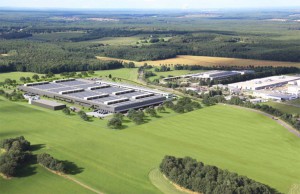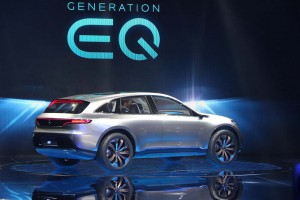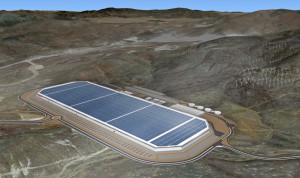Daimler AG has broken ground in the German town of Kamenz for a second battery plant, a move that should yield a 400% increase in its capacity to produce lithium-ion packs for a wave of new electric vehicles now under development.
During last month’s Paris Motor Show, Daimler revealed the new Generation EQ concept vehicle, a production version of which will serve as the anchor of an all-new new sub-brand, Mercedes-EQ. The maker also revealed electrified versions of all the current Smart brand models.
“By 2025, our passenger car product portfolio will contain more than ten fully electric vehicles,” said Thomas Weber, the Daimler board member overseeing R&D and Mercedes car development. “At the same time, we are continuously pushing our plug-in-hybrid offensive and the introduction of 48-volt-systems,” and the batteries that will be produced at the new plant, as well as the original factory in Kamenz, will become “an integral part” of that product roll-out.”
(Click Here to check out the Daimler Generation EQ.)
Daimler will invest 500 million euros, or $544 million, in the new plant, located in the suburbs of Dresden, and about 1 billion euros, overall, in battery production. That’s on top of the billions it expects to spend developing its 10 new battery-electric vehicles, or BEVs.
The new plant is expected to be in operation by 2018. While specific plans for the production version of the Generation EQ model haven’t been released, Daimler CEO Dieter Zetsche hinted in Paris that it should reach showrooms “before the end of the decade.”
The automaker hopes to eliminate traditional concerns about battery power by boosting range and by lowering costs. It says the first Mercedes-EQ model will deliver “up to 500 kilometers,” or as much as 310 miles, per charge.
While Daimler officials have not discussed battery pricing, competitors have reported a sharp decline in costs in recent years. At the beginning of the decade, it cost about $1,000 per kilowatt-hour for lithium-ion batteries, General Motors product development chief Mark Reuss told TheDetroitBureau.com. The batteries for the new Chevrolet Bolt BEV will come in around $150 per kWh. And that figure is expected to come down even more by the end of the decade.
(BMW planning two more i battery-cars. But what then? Click Here for the story.)
Automakers have split on their approach to sourcing batteries for their various hybrid, plug-in and BEV models. Some companies are simply relying on outside suppliers. Others, like Daimler, are producing them on their own, or in a joint venture with an existing battery manufacturer. That’s the approach Tesla Motors is taking with its new Gigafactory. Located in Reno, Nevada, it is the result of a partnership between Tesla and Japanese electronics giant Panasonic.
Industry observers suggest that the approach taken by Tesla and Daimler can help lower costs and give a manufacturer more control over the factory’s output. But it could pose challenges if competitors come up with more advanced battery technology.
The Kamenz facility will, appropriately enough, rely on green energy sources. According to Daimler, solar modules with the surface area of two football fields will be mounted atop the new factory, capable of producing as much as 2 megawatts of electricity. Some of that energy will be diverted to stationary storage systems that will provide power when it’s dark outside.
Like Tesla, Daimler is also planning to become a major player in the fast-growing energy storage industry.
(Mysterious Faraday Future takes a step closer to reality, revealing its first car at 2017 CES. Click Here for more.)



